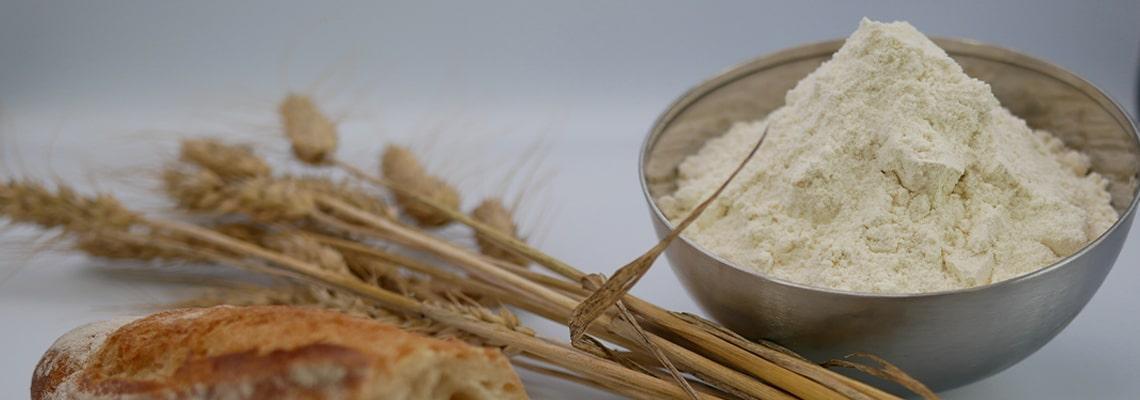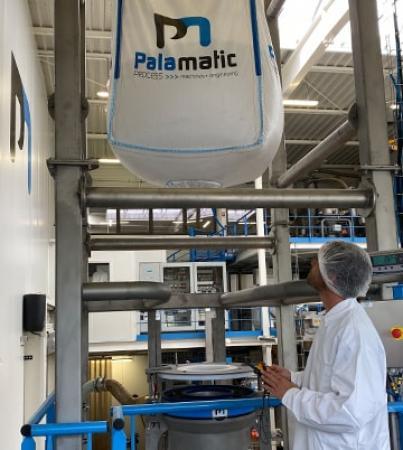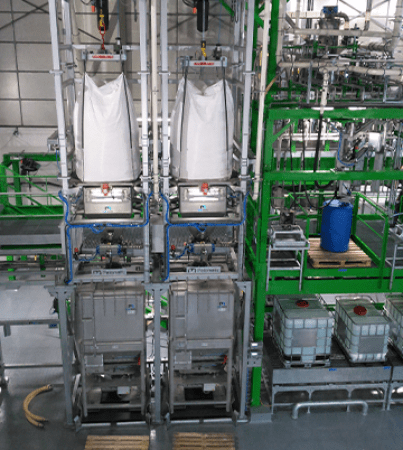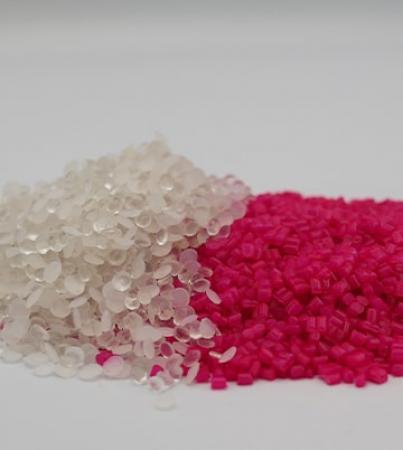1. Main characteristics of wheat flour
Wheat flour is one of the most common and consumed food ingredient in the world.
Most regulators impose a maximum humidity level (around 16%) for production and storage. Higher humidity levels would cause the material to spoil when stored for long periods.
Wheat flour is the result of grinding the grain of the wheat plant.
The main building block in wheat flour is starch. Starch is a complex carbohydrate that will be metabolized by baker's yeast, releasing carbon dioxide. Wheat flour is also made up of gluten, water, sugar, minerals and vitamins. Gluten is a mixture of proteins, which is very important in the bread-making process. Its molecules form an elastic and extensible network, which will retain the carbon dioxide bubbles resulting from the degradation of sugars by the yeasts. In wheat seeds, the fat is mainly found in the germ and in the husks. The fat is removed at the time of grinding. This removal is necessary for preservation of the flour. There are few vitamins in flour (most of them are in the germ).
However, we can find the following vitamins: vitamin B1 participates in the transformation of carbohydrates, vitamin B2 promotes growth, vitamin PP is essential for cells and vitamin E ensures the proper functioning of the nervous system and muscles.
Wheat flour is white in color.
The grain size of flour is determined by sieving or by laser diffraction. Each fraction retained by the sieve (s) is expressed in percent relative to the weight of flour tested.
The limit between semolina and flour is generally considered to be 160 µm. A clean flour should have a fraction greater than the smallest dimension possible.
2. Main applications of wheat flour
Wheat flour is the most widely used raw material in the food industry, mainly in the bakery (artisanal and industrial), biscuit, pastry and bread industries.

3. Indsutrial handling of wheat flour
In general, flour is an easily flowing and explosive powder, subject to ATEX standards. Palamatic Process can assist you in analyzing your risks and characterizing your powders in order to determine which process is best suited to your constraints.
4. Applications of wheat flour with Palamatic Process equipment
Flour has multiple industrial applications. It can be conditioned, emptied, transferred, sieved, mixed or even dosed according to the needs of manufacturer.
Bulk bag unloading stations, such as the EasyFlow® with a stripping box, will suit those looking for a good dust-tight seal while obtaining an easy flow of wheat flour. Butterfly valves can be used for controlling the emptying of the buffer hopper to stainless steel bins, for example.
Industrial screens, such as the GSC vibrating screen, can be installed in addition to sack or bulk bag emptying stations in order to preserve the quality of the product. Palamatic Process sieving solutions avoid the presence of any foreign body by removing excessively large flour agglomerates. Hygienic models such as the ECD vibrating screen are available to make cleaning your production line easier.
The VFlow® pneumatic vacuum transfer system offered by Palamatic, is suitable for the conveying of wheat flour. Also, simple screw conveyor may be enough to transfer the material if it has the appropriate characteristics for this type of transport.
To facilitate the flow of flour, vibrators can be installed.
Air filtration and dust collection systems, such as an extractor hood, can be necessary to prevent the spread of dust in your production workshop.
All of the installations can be partially controlled remotely using a Pal'Touch® control cabinet.
The installation of this equipment is done in compliance with the hygienic standards and regulations in your industrial sector, and can be ATEX certified.
5. Palamatic Process customer applications with wheat flour
Palamatic Process counts among its customers a number of companies from the industrial bakery and pastry sectors. Other companies in the ready meal or pet food industries may also be required to handle wheat flour. Here are some examples of successful installations at our customers:
- Tank unloading using a suppressor
- Sifting and transfer of ingredients into a kneader for making hamburger buns
- Bulk bag emptying system for premix preparation
- Conveying petfood croquettes
As these customer cases illustrate, many process installations are possible to process wheat flour. Our experts offer you fully personalized solutions that adapt to your technical specificities. Contact them to study your project.

















